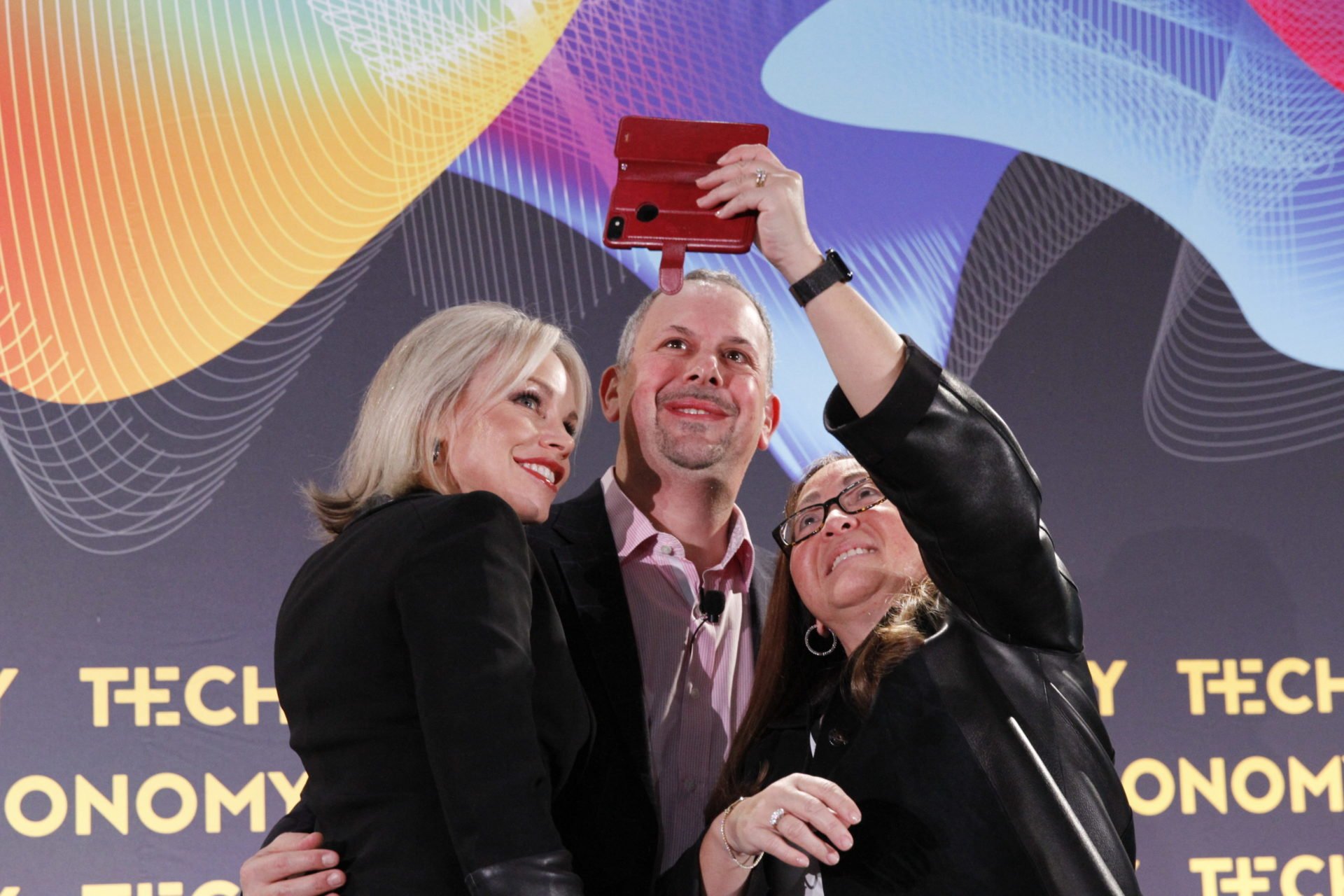Innovation is more broadly associated with nimble startup companies than with massive, mature corporations. But two leaders from century-old companies told the Techonomy 2018 audience that even huge organizations can find new ways to spur creative thinking and entrepreneurial ideas.
One key factor: being “humble enough to say that the best science and technology is just as likely to come from outside the walls of a big company like J&J as inside,” said Melinda Richter, global head of Johnson & Johnson Innovation, JLABS, a life science incubator program run by the pharma giant. Under the J&J model, life science startups and the entrepreneurial teams behind them are paired with mentors within the pharma company. Of course, the difference between an incubator launched by J&J and most accelerator programs is scale: JLABS spans more than 450 companies that have collectively raised more than $11 billion in funding.
Meanwhile, at GE, the focus on innovation now includes not only new inventions and technologies but also business models themselves, said Sue Siegel, chief innovation officer and CEO of business innovations at the company. A major part of that formula involves GE Ventures, which is tasked with investing in and incubating startups as well as licensing novel tech. Sourcing innovation outside GE stems from a recognition that even the scale and resources available at such a large organization aren’t enough to rely on the internal team alone. “Nobody can do it by themselves,” Siegel said. “I don’t think any one company is able to do that anymore.”
Both speakers also emphasized the importance of nurturing talent, internally and externally. “The existing employees in big companies are probably the biggest untapped potential talent base there is in industry,” Richter said. By connecting those people to the external entrepreneurial teams through JLABS, J&J is tapping into that wealth of experience, skills, and knowledge, she added. “Because of that, these employees are blossoming and that’s the value of putting these two different groups of people together.”
Because innovation happens throughout an organization, Siegel said, one of her goals is to “provide the right kind of tool sets so that anybody and everybody can innovate.” At GE, that’s being addressed in part by training programs to get employees up to speed on new skills and by encouraging risk-taking.
Perhaps the most important element in fostering a culture of innovation, though, is educating stakeholders about what to expect and how to measure success, Siegel said. “The metrics of innovation…are very different from the mature metrics that are applied to mature processes and companies,” she said. “[We have to] educate the folks internally on that.”
Watch the discussion:
Legacy Companies Look Outward to Find Innovation
Collaboration and partnership are the watchwords as two century-old companies, Johnson & Johnson and GE, are looking outside their walls to encourage innovation.
















